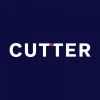The year 2018 is in full swing and the dizzying pace of new technology development, business strategies, and operating models hasn’t relented. With digital disruption lurking around almost every corner, many organizations — ranging from large global powerhouses to small niche startups — are painstakingly busy evaluating their relevance and value not only within their own markets but in markets outside their sphere. Almost all are working toward making the necessary strategic changes to get in the game (and stay in it!) and ultimately rise above the competition.
As we do each year, we asked Cutter’s team of experts to weigh in on some of the technologies, trends, and strategies that will truly make waves in the months to come. We hope the articles in this issue of Cutter Business Technology Journal help clarify your organization’s path forward in today’s digital economy.
In This Issue
First up, Harvard Business School Professor and Cutter Fellow Karim Lakhani highlights how a small number of “hub firms,” such as Amazon, Alibaba, Facebook, Google, Apple, and Microsoft, are dominating and disrupting traditional businesses by leveraging their network-based strength to gain market share. Lakhani offers advice on competing with these hub firms and laments the need to examine future prospects in the context of the hub economy.
Next, Cutter Fellow Steve Andriole describes five accelerating trends to watch for in 2018 and predicts which ones will carry the most momentum, using a concrete score on a 1-5 scale. Andriole goes on to recommend paying very close attention to the companies providing the services you deeply depend on, as he warns of upcoming volatility in the technology industry itself.
In our third article, Carl Bate, Laurie Guillodo, Greg Smith, and Mandeep Dhillon detail four outcome-affecting trends for 2018 (i.e., “trends that impact the ability of a company to leverage emerging technologies in their business”). The authors illustrate how companies can turn these potential trend risks into positive business outcomes through “startup ways of working” and new opportunities in the coming year. In particular, they encourage a return to the principles of the Agile Manifesto and a hard look at the technology foundations.
Next, Cutter Senior Consultant James Mitchell turns to the flurry of attraction in the past year in securing public cloud service providers. Further validating this trend, he predicts that “the trend across the globe will be to go ‘all in’ on just a handful of hyperscale public cloud providers.” Mitchell further asserts that “this concentration of risk will become a focus of attention for those charged with mitigating ‘black swan’ risks to the global economy.”
In our fifth contribution, Cutter Technical Consultant Nate O’Farrell introduces Nano (recently rebranded from RaiBlocks), a third-generation cryptocurrency that appears to make up for Bitcoin’s and Ethereum’s shortcomings with zero fees, instant transactions, and infinite scalability. He opines that Nano is one of a few third-generation cryptocurrencies that “can offer the technology and functionality needed to facilitate mass adoption and real-world use as an effective currency.”
Kevin O’Leary shares O’Farrell’s vision of Bitcoin’s fate but has more faith in Ethereum’s potential in 2018. He details some interesting plans in the works to develop smart contract applications on the Ethereum platform as well as a proof-of-stake mining process that will make Ethereum more efficient and environmentally friendly.
Next, Seán Nevin and Rob Gleasure discuss the rise in popularity of a new form of crowdfunding — initial coin offerings (ICOs). They believe the hype surrounding ICOs will continue through 2018 but will level off when crowdfunding platforms and traditional funding players become involved. Ultimately, as the authors suggest, legislative change like that imposed on traditional crowdfunding will need to be extended to cover the ICO market.
Cutter Senior Consultant Paul Clermont updates some predictions he made over the past couple years while adding four more, replete with their implications on our workforce and society. According to Clermont, “While 2018 may or may not be a watershed year for some specific technology or other … the more interesting action will come from the public policy and perception arenas and in the evolution of business models.”
As a follow-up to his article from last year’s trends issue, Cutter Senior Consultant Alexandre Rodrigues expands on his commentary surrounding AGI — artificial general intelligence. AGI capabilities continue to play an influential role in the business arena but as Rodrigues points out, there are two issues that companies need to firmly address: (1) setting realistic expectations for the technology and (2) various ethical challenges (with a need for more legislation and regulation).
In her article on business architecture, Cutter Senior Consultant Whynde Kuehn predicts that architecture will continue to play an essential role in the success of a business and, specifically, that the architecture role will elevate to one of a more strategic nature. She tells us that “business architects should challenge themselves to be not only architects, but also leaders and change agents — and develop value-added skills that complement the business architect role.”
Next, Cutter Senior Consultant Balaji Prasad takes a broad look at the enterprise in 2018. He believes the enterprise is comprised of a core platform — the sum of multiple components. Some of the components that might play a role in the success of the enterprise include APIs, business architecture, agility, and “a return to the roots — to the people side.”
Data governance, although not a new practice, is more critical than ever, according to Cutter Senior Consultant Claude Baudoin. A recent increase in privacy breaches, Internet of Things (IoT) data generation, and data residency challenges enforces the urgency to prioritize and address vulnerabilities and formulate a governance plan to responsibly manage enterprise data.
Finally, Dean Crowley stresses the importance of the adoption of an industry-wide ontological standard within the financial industry. He believes this will prove useful for streamlining the reporting process and enabling an improved customer experience. Crowley also feels that those organizations using an ontology will secure a competitive advantage over those who choose not to adopt one.
Clearly, there is no shortage of new technologies, business strategies, or operating models for any organization ready to embrace a digital transformation. We wish you the best of luck in your future business endeavors!
We would love to hear your thoughts on these trends and predictions, as well as any others you wish to add. Let us know in the comments section below.
[For more from the authors on this topic, see "Business Technology Trends and Predictions, 2018."]



